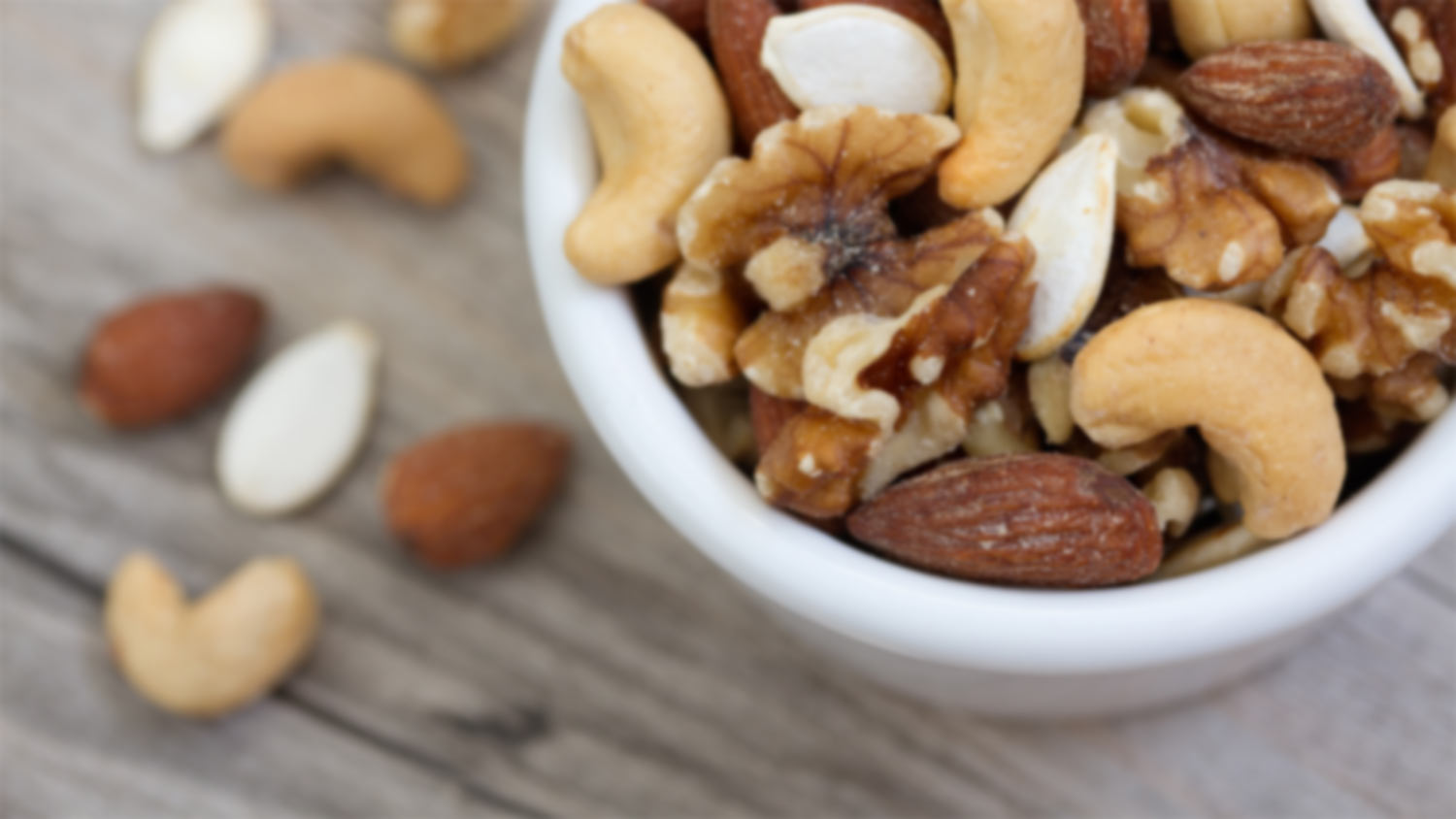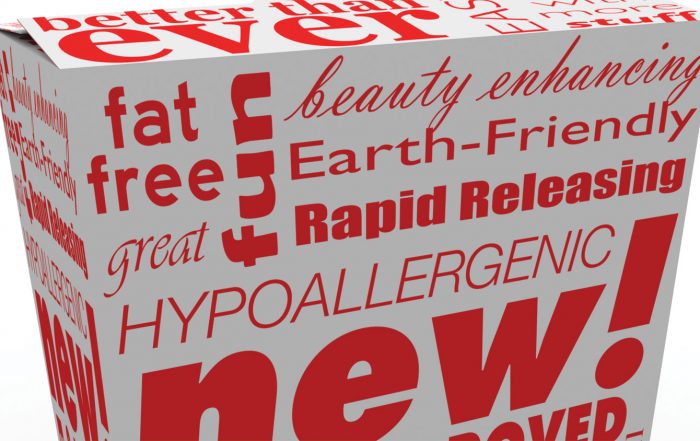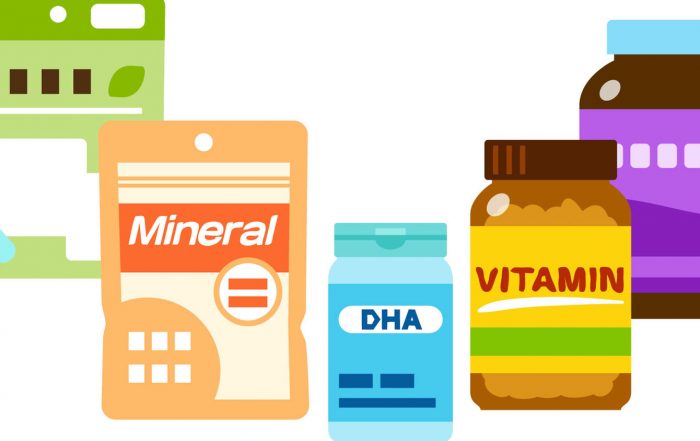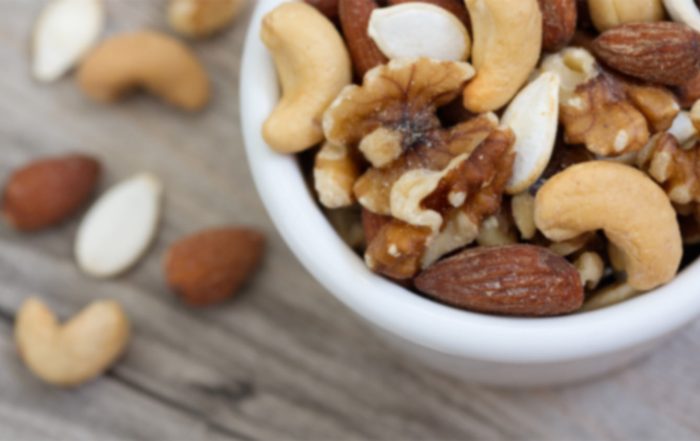
Fighting with KINDness: FDA’s Unhealthy Enforcement of the “Healthy” Nutrient Content Claim Regulation
by John Johnson III and Nicole Ault
Only in FDA’s regulatory world can sugary cereal and a breakfast pastry be called “healthy” while almonds and avocados cannot—a fact that the KIND company (known for its “healthy” snack bars) pointed out in a colorful infographic. The infographic was part of KIND’s response to an FDA Warning Letter, which alleged that KIND’s use of the term “healthy” in its labeling was unlawful (among other allegations). KIND fought back with two complaints: first, FDA misapplied its own regulation as currently written; and second, the currently drafted regulation makes little sense with modern nutritional science.
 FDA ultimately backed down on its challenge to KIND’s “healthy” claim, but only after exposing itself to public mocking based on its wooden application of an outdated regulation. This misstep, however, offers an opportunity to reevaluate not only the substance of the rule but also the way FDA approaches the issue in order to avoid a similar predicament in the future.
FDA ultimately backed down on its challenge to KIND’s “healthy” claim, but only after exposing itself to public mocking based on its wooden application of an outdated regulation. This misstep, however, offers an opportunity to reevaluate not only the substance of the rule but also the way FDA approaches the issue in order to avoid a similar predicament in the future.
Regulation of “Healthy” and the Historical Context
The nutritional science behind today’s “healthy” rule is a remnant of decades past. In 1969, President Nixon held the White House Conference on Food, Nutrition, and Health to address nutritional deficiencies within the country. Though the central focus was on malnutrition, the Conference also recognized a rise in health consequences associated with improper diet, such as obesity and heart disease.
The nutrients of greatest concern were fat, especially saturated fat, and sodium.1 This concern grew throughout the 1970s and ’80s, and fat became increasingly vilified. Nutritionists called for low-fat diets and encouraged consumers to drink skim milk and substitute margarine for butter. Companies formulated low-fat versions of their foods, often increasing levels of carbohydrates and sugars in order to compensate for the difference in flavor and texture.2 Sugar, after all, was not a problematic nutrient at the time, as indicated by FDA’s reflection in 1993: “with the advent of mandatory nutrition labeling and an ever increasing interest in healthy eating, more manufacturers will attempt reductions in the levels of nutrients like fat, saturated fat, cholesterol, and sodium in their foods.”3
Against this backdrop, FDA finalized its regulations for Nutrient Content Claims (NCC), including the “healthy” claim. The Nutrition Labeling and Education Act of 1990 revised the Food, Drug, and Cosmetic Act by adding Section 403(r), which declared that any NCC, a “claim that expressly or implicitly characterizes the level of a nutrient,”4 is prohibited unless permitted by regulation. Consequently, FDA established regulations specifying a number of expressed and implied NCCs.
An expressed NCC is “any direct statement about the level (or range) of a nutrient in the food, e.g., ‘low sodium’ or ‘contains 100 calories.’”5 Implied NCCs, on the other hand, fall into two categories. The first “describes the food or an ingredient therein in a manner that suggests that a nutrient is absent or present in a certain amount (e.g., ‘high in oat bran’).”6 The other “suggest[s] that a food because of its nutrient content may help consumers maintain healthy dietary practices” and is “made in connection with an explicit or implicit claim or statement about a nutrient (e.g., “healthy, contains 3 grams of fat”).”7
FDA decided to regulate the term “healthy” as this second type of implied NCC and, in 1994, the agency finalized a definition for the term: any food product labeled “healthy” must meet certain specifications for levels of fat, saturated fat, cholesterol, sodium, and vitamin A, vitamin C, calcium, iron, protein, or fiber (depending on the food type).8 Notably, the “healthy” NCC regulation gives no requirement for caloric or sugar content. Though such a requirement was proposed in comments, FDA dismissed the suggestion with an explanation that runs contrary to current beliefs:
The information provided in the comments did not show that consumers expect “healthy” to be a claim about the caloric content of the food. Furthermore, the purpose of defining the term would be defeated if the term were defined so narrowly that it is appropriate only for people on weight-loss diets. Thus, the agency is not requiring that a food be ‘low calorie’ or ‘low’ in sugar to bear the term ‘healthy.’9
FDA and KIND Bar
Although a relatively new member within the snack bar industry, KIND invigorated this commodity group with its ingredient selection.10 Prior to KIND’s market entrance in 2004, the bar industry had long been dominated by granola-based cereal bars and minimal use of nuts. KIND’s nut-based bars are marketed to customers seeking healthier snack options: “There’s healthy. There’s tasty. Then there’s healthy and tasty. At KIND®, we believe you deserve both—we call it our brAND philosophy.”11 Over the years, KIND bars caught on, and many brands followed along with “me too” products. Because they are nut-based, KIND’s products are dense in fat, including saturated fats, and generally low in carbohydrates when compared to other snack foods.
High levels of fat combined with “healthy” marketing and a large market share drew attention from FDA. Following a label and website review, FDA issued a Warning Letter to KIND. Among other issues, FDA alleged that four of its bars were misbranded because they contained an implied NCC (specifically, the term “healthy”), yet KIND’s products were too high in fat to be labeled “healthy” under NCC regulations. FDA claimed that implied NCC regulations applied in this case because KIND used “healthy” on its labels and website “in connection with” expressed NCCs.12
FDA’s claim was a broad interpretation of the requirement that the term “healthy” must be used “in connection with” the expressed NCC in order to be considered an NCC itself. KIND’s “healthy” claim did not frequently appear on the same panel of the label as the expressed NCCs cited by FDA; moreover, several of KIND’s claims that FDA cited as problematic did not assert that the product was healthy due to its nutrient content.13
Indeed, FDA’s Warning Letter never explained how KIND’s use of “healthy” suggested that it may help consumers maintain healthy dietary practices. Given the conclusory statement in the Warning Letter, FDA seems to believe that “healthy” inherently refers to healthy dietary practices if a company includes an expressed NCC anywhere in its labeling. But that is a narrow understanding of a term that commonly refers to, among other things, lack of synthetic ingredients or pesticide residues.
The proposal and preamble to the “healthy” rule do not shed much light on FDA’s decision to challenge KIND with the NCC regulation. The example in the regulations (“healthy, contains 3g of fat”) suggests that “connection” with an NCC means spatial proximity and direct reference to the expressed NCC. However, this spatial proximity in the example could merely reflect the fact that the Code of Federal Regulation does not have much space to include examples. The preamble clarified that FDA did not believe that spatial proximity is a requirement. The decision whether “healthy” is an NCC “is appropriately made on a case-by-case basis;” even if there is no spatial proximity, “healthy” could be classified as an NCC if it is meant to be read together with the explicit NCC.14
However, FDA also expounded that an individual “healthy” claim would still be subject to the “false or misleading” clause if it could not be classified as an NCC. “Even when ‘healthy’ is not used in a nutritional context . . . the agency would have significant reservations about the use of this term if it appears on a product that has nutrients at levels that exceed their disclosure levels as established in Section 101.13(h). It seems highly unlikely that the use of this term on a product that contains a nutrient at a level that would not assist consumers in maintaining healthy dietary practices would not be misleading.”15
KIND Fights Back
Rather than accepting FDA’s position and removing the “healthy” claims all together, KIND pushed back on the “healthy” NCC rule and FDA’s application of it.16 Fighting on the public front, KIND issued an infographic in a blog article challenging the “healthy” rule currently in the regulations. On the regulatory front, the company submitted a Citizen Petition requesting that FDA “fully reevaluate its nutrient content claim regulations and amend those requirements as necessary to ensure consistency with current federal dietary recommendations.”17 After all, the “healthy” rule is predicated on the theory that all fats, whether from lard or nuts, are unhealthful—a theory that has been reevaluated by nutritional science, including other federal agencies like the National Institutes of Health.
In the petition, KIND sought to clarify which “healthy” claims are NCCs and which are not. KIND requested that the FDA establish a new type of claim, a “dietary guidance statement,” which is not an NCC but a claim that the food is useful “in maintaining healthy dietary practices.”18 KIND also requested that FDA clarify that “healthy” is only an NCC when it is “immediately adjacent to an explicit or implicit claim or statement about a nutrient.”19
FDA and KIND ultimately reached a compromise. In a public announcement, the agency clarified that the company’s phrase “healthy and tasty” is not an NCC as long as it does not appear on the same panel as an NCC or nutritional information.20 However, this resolution was not specified in the Close-Out Letter, which merely declared that KIND had “satisfactorily addressed the violations contained in the Warning Letter.”21 FDA went to greater lengths to publicize the KIND case resolution than it has for any such case in the past five years, issuing both a Close-Out Letter and a press release that went out on the agency’s list serve.
Curiously, FDA labeled its email to KIND a “Constituent Update,” but the email does not appear on FDA’s Center for Food Safety and Applied Nutrition (CFSAN) webpage dedicated to such updates. Though not explicitly mentioned in the public announcement, it seems more than coincidental that at the same time, FDA announced it is reevaluating the “healthy” rule. For a federal agency that rarely apologizes, it is unusual to see such scrambling to make a good public appearance—indicating that FDA realized it was on the defensive.
Re-evaluation and Need to Revise
Although the KIND Warning Letter was not the only one in which FDA sought to restrict use of “healthy,”22 it was the most public because it targeted a market leader—and it did not do the agency’s public image a favor. By warning a company well-known for offering a more nutritious snack than chocolate or potato chips, FDA chose a battle that it could not win in the public eye; it is difficult to defend a rule under which salmon, almonds, and avocados cannot be called “healthy” but a sugar-filled beverage can, provided that it has 10% Daily Value of Vitamin C (perhaps this would run afoul of FDA’s so-called “jelly bean rule” prohibiting fortification for the sole purpose of rendering junk food healthy, but one could still call a sugar-filled beverage healthy under the guiding regulation).
Moreover, FDA’s application of an outdated rule demonstrated that its “Applied Nutrition” effort is lagging. Administrative agencies usually receive deference because they are assumed to apply subject matter expertise, but such expertise was lacking in this case. Instead, the KIND matter could have led to a creative legal challenge claiming that the “healthy” rule is unlawful because it is not based upon current science.
Any legal challenge to the “healthy” rule, however, would put the challenger between a rock and a hard place. If the court invalidated the “healthy” rule, then the product would not be misbranded for failing to comply with an NCC. However, by invalidating the regulation, the court would have to classify the claim as an NCC (otherwise a challenge would be moot). This would cause the product to be misbranded because it would be an NCC that is not permitted by a regulation.23
The challenge for FDA in its attempt to ensure “Applied Nutrition” is that the slow process of overhauling regulations cannot keep up with the pace of scientific development, especially with a limited budget. Nutritional science is continually evolving and becoming more nuanced, but regulations, though originally designed to be flexible, are increasingly hampered by the hurdles that must be jumped through to change them. This lack of flexibility is compounded by the policy debates associated with the concept of healthful eating—it took FDA nine years, for example, to update the Nutrition Facts Panel.24
FDA could have avoided this predicament by not broadly classifying “healthy” as an NCC. Instead, it could have specified that “healthy” must be placed in immediate proximity to an expressed NCC in order to be considered an NCC itself. This was KIND’s proposal. However, this narrow definition of the “healthy” NCC would likely enable companies to circumvent the rule by rearranging the formatting of their label—a situation that KIND sought to avoid by requesting that FDA create the “dietary guidance statements,” which would be regulated under the requirement that labeling must be “truthful and not misleading, in any particular.” KIND envisioned that FDA would clarify the borders of this claim through guidance documents.
Using a guidance document approach for “dietary guidance statements” would give FDA greater flexibility to keep in step with dietary science. To simplify its work, FDA could incorporate the Dietary Guidelines for Americans as the basis for a compliant dietary guidance statement, requiring that a dietary guidance statement only be made about a product that complies with the Dietary Guidelines. However, as guidance (which has no force of law) FDA would be forced to enter discussions about whether an alternative approach to its guidance is false or misleading. But this objection may be moot, as FDA is unlikely to initiate a court action over this issue.
An alternative to KIND’s approach in the Citizen Petition would be to retain the broad reading of the “healthy” NCC and revise the qualification. Similar to the previous suggestion, the regulation could affirmatively incorporate the Dietary Guidelines with some specification by reference. For example, a food could make a healthy NCC claim if it complies with the specifications established in the Dietary Guidelines. This, of course, should then be further expounded upon. First, fresh, raw, or dried (unsweetened or salted) fruits, vegetables, nuts, and fish would comply in most instances. Second, processed foods would need to be nutrient rich and limited in empty calories, fat, or sugar. Of course, the challenge would lie in defining “nutrient rich” and what constitutes empty calories, fat, and sugar.
Defining the boundaries should involve the input from the USDA Advisory Committee and other officials. If FDA were to adopt a regulation that incorporates the Dietary Guidelines, future editions could be drafted to be mindful of such regulations and provide greater clarity in the Guidelines for processed foods. Furthermore, if incorporated with the Guidelines, the regulation would rely upon a scientific evaluation that takes place every five years—and therefore remain current.
Conclusion
The KIND Warning Letter provides an example of the importance and the challenges of ensuring that the “healthy” regulation remains current. Otherwise, when the agency seeks to take an enforcement action, it appears out-of-touch and thereby undermines its credibility. As FDA re-evalutes the healthy NCC regulation, it should seek to draft a regulation that can be easily revised as scientific knowledge changes. This would help FDA avoid taking a scientific position contrary to that of other federal agencies—a position that, as the KIND case demonstrates, may bring on a fight.
Epilogue
In late September, FDA further back away from its original position and issued a guidance document indicating the agency would exercise discretion under certain circumstances. In particular, the food product does not need to be “low-fat” so long as “(1) The amounts of mono and polyunsaturated fats are declared on the label and (2) the amounts declared constitute the majority of the fat content.”25 Additionally, FDA is extending the list of “good nutrients” to include Vitamin D and potassium.
- White House Conference on Food, Nutrition, and Health: Final Report, 53-54, 102, 107, 145-46, http://hdl.handle.net/2027/umn.31951d02987449r.
- See, e.g., PBS Frontline, Did Low-Fat Era Make Us Fat, http://www.pbs.org/wgbh/pages/frontline/shows/diet/themes/lowfat.html.
- 58 Fed. Reg. 2302, 2349 (January 6, 1993).
- 21 C.F.R. 101.13.
- 21 C.F.R. 101.13(b)(1)
- 21 C.F.R. 101.13(b)(2)(i).
- 21 C.F.R. 101.65(d)(1).
- 21 C.F.R. 101.65(d)(2).
- 59 Fed. Reg. 24232, 24244 (May 10, 1994).
- See, e.g., Caroline Fairchild, Why Kind Bars are Suddenly Everywhere, Fortune (February 10, 2014), http://fortune.com/2014/02/10/why-kind-bars-are-suddenly-everywhere/.
- See KIND, About, available at http://www.kindsnacks.com/about/.
- FDA Warning Letter, KIND, LLC (March 17, 2015), http://www.fda.gov/ICECI/EnforcementActions/WarningLetters/ucm440942.htm
- An exception would be the “KIND Peanut Butter Dark Chocolate + Protein” bar, which KIND did describe (on its webpage) as “healthy” because of its protein content.
- 59 Fed. Reg. at 24235.
- Id.
- Kind Blog, A Note to our Kind Community (April 14, 2015), https://www.kindsnacks.com/blog/post/a-note-to-our-kind-community-2/.
- KIND, Citizen Petition, https://s3.amazonaws.com/kind-docs/citizen-petition.pdf.
- KIND, Citizen Petition, 3.
- Id. at 21.
- Email, CFSAN Constituent Update – Statement of FDA’s Actions on Labeling of KIND Products (May 10, 2016).
- FDA, Close-Out Letter (CMS 437043) (April 20, 2016), http://www.fda.gov/ICECI/EnforcementActions/WarningLetters/2016/ucm497335.htm.
- See FDA Warning Letter, Wonder Natural Foods Corp. (July 13, 2015) http://www.fda.gov/ICECI/EnforcementActions/WarningLetters/2015/ucm460910.htm.
- Chevron deference is generally a strong argument when the rule at issue has undergone notice-and-comment. However, for those who rely on an agency expertise theory to justify the Chevron rule, there is little reason to provide deference when the rule is not based on science and therefore not necessarily based in the agency using its expertise and ultimately is arbitrary and capricious.
- 72 Fed. Reg. 62491 (November 2, 2007) (Advanced Notice of Proposed Rule Making); 81 Fed. Reg. 33742 (May 27, 2016) (Final Regulations).
- FDA, Use of the Term “Healthy” in the Labeling of Human Food Products (September 2016), http://www.fda.gov/downloads/Food/GuidanceRegulation/GuidanceDocumentsRegulatoryInformation/UCM521692.pdf.
Update Magazine
November/December 2016









